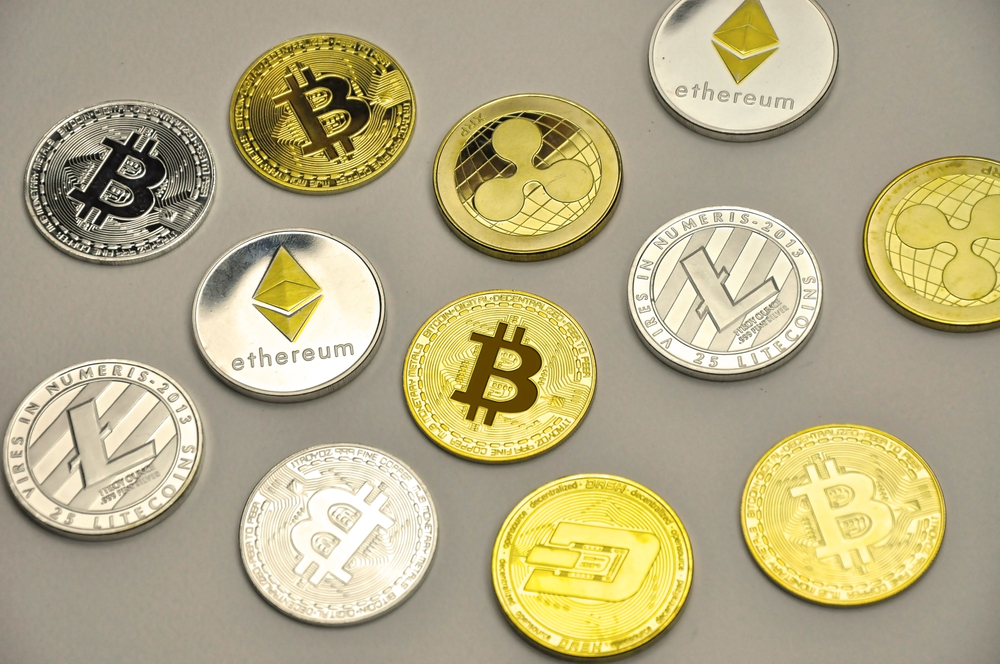The word Tokenomics is directly related to the economics of a crypto token. It significantly impacts the overall value and use of a crypto token. It also includes factors like the burn schedules of a crypto token, its supply and demand, its creation, distribution, and the incentive mechanisms connected to it.
In order to be successful, every cryptocurrency project needs well-designed tokenomics. Moreover, well-informed and seasoned crypto traders and investors always take a look at the tokenomics of a crypto asset before investing in it.
A Brief Overview of Tokenomics
The word “Tokenomics” is made by combining the words “Token” and “Economics”. It is the key factor for an investor to take into consideration before participating in any crypto project.
In addition to other important factors, like roadmap, community size, white paper and the founding team of a project, its tokenomics help an investor understand the future potential of a cryptocurrency project. It is very important for every crypto project to build strong tokenomics in order to develop sustainably in the long run.
The tokenomics of every blockchain project depend on the mindset of its developers. With the help of tokenomics, developers either encourage or discourage certain actions taken by their investors.
This works just like central banks, which print money, and then introduce certain policies to encourage or discourage saving, lending, and spending of that money in different areas.
In the case of cryptocurrency, tokenomics and related rules are enforced with the help of code and can’t be changed easily. Moreover, crypto tokenomics is always transparent, just like every other thing related to blockchain.
For example, the tokenomics of Bitcoin are designed to only allow 21 million Bitcoin to be generated. Also, the rules are set to help the miners mine new Bitcoins while helping maintain the network. A block of Bitcoin is mined and added to the circulation every 10 minutes, and the miners are rewarded for their efforts in this regard.
The code of Bitcoin is designed to halve the reward of mining one block of Bitcoin after every 210,000 Bitcoin blocks. When calculated, the halving time arrives roughly every four years. This means that per block rewards for Bitcoin have been halved three times ever since its creation in 2009.
It started at 50 BTC/ block and got reduced to 25 and then to 12.5 BTC/ block. Currently, the reward per block of Bitcoin mined sits at around 6.25 BTC/ block.
With the help of precise calculations, we can calculate the total number of bitcoin which can be mined every year and can also predict when the last bitcoin will be mined.
The tokenomics of bitcoin has also listed the transaction price, which is received by miners upon validation of a new block. As more and more people start making bitcoin transactions, the network will get congested, and the transaction fees or gas per transaction will also increase considerably.
This type of high fee structure is introduced to help prevent spam and unnecessary transactions and to keep incentivizing the miners even as the rewards per block continue to decrease.
We can easily conclude that bitcoin has smart tokenomics. Moreover, the rules are clear and transparent, and anyone can make accurate predictions about the future of bitcoin mining by just looking at its tokenomics.
In the case of bitcoin, the tokenomics is designed to keep the platform profitable for investors and miners alike, thus keeping everything robust and valuable in the long run.
Tokenomics: Key Characteristics
Since tokenomics is a broad term related to a bunch of factors affecting a crypto’s value, it basically refers to the economic structure of that cryptocurrency as set by its developers.
Let’s take a look at some of the biggest factors you have to consider when learning more about the tokenomics of any cryptocurrency.
Supply of Tokens
Just like any other asset, the supply and demand theory controls the value and price of cryptocurrencies. There are lots of factors which control the supply of tokens.
Maximum Supply
First of all, there is a maximum token supply with every cryptocurrency. This means the number of tokens that are coded to ever exist in that cryptocurrency’s blockchain. This is also called a hard cap. For example, the hard cap or maximum token supply for Bitcoin is 21 million. On the other hand, BNB has a maximum token supply of 200 million.
Moreover, there are some tokens which have to maximum supply hard cap. A good example of this is Ethereum, which increases in token supply every year without any limit. Other stablecoins, like USDT, BUSD, and USDC, also don’t have a maximum supply, as the total number of these coins in circulation depends on the reserves backing them.
There are lots of other cryptocurrencies which do not have a maximum token supply coded into their blockchain.
Circulating Supply
Circulating supply simply refers to the total number of tokens in circulation at any given time. This includes all the tokens in supply, no matter if they are locked up in wallets, are being actively traded with, or are in any other condition.
The total amount of circulating supply of a token has a significant impact on its overall value as well.
The circulating supply of a token can be used to get an idea of the maximum supply of the same token as well.
Token Distribution
In addition to the demand and supply of a specific token in the market, token distribution is another important factor to consider. For example, by taking a look at the number of large-scale and institutional investors holding a specific token, you can learn more about how they will place their trades and can get a rough idea of the future value of the same token.
When a token is being launched into the market, it can use either one of the two methods of launch.
Fair Launch
One of the methods is a fair launch, and the other method is a pre-mining launch. In a fair launch, token assessment isn’t granted to anyone, and there are no private token allocations. Bitcoin is a good example of this type of launch.
Pre-Mining Launch
Pre-Mining launch, as the name suggests, includes the mining and distribution of a token prior to its launch into the market. The token is minted before it is launched into the public, and a select group of wallets benefit from it. A good example of a Pre-Mining launch is Ethereum.
If you want to invest in a token, you should first see how fairly it is distributed.
For example, if a few investors hold most of the shares of a cryptocurrency token, investing in it can be a risky step. On the other hand, if most of the shares are held by investors and the founding team, this means they are looking towards long-term goals with their cryptocurrency.
Before investing in a token, you should also check its locked-up amount. This way, you’ll have a good idea about the release date of the locked-up amount and will be able to make your investment decisions accordingly.
That’s because when a huge amount of tokens are released into the market, they have a reverse effect on the increasing value of that token because of its increased supply.
Offered Incentives
You should also look at the incentives provided by the token before investing in it. One of the biggest factors behind the long-term sustainability of a token is the incentive mechanisms built into its tokenomics. For example, the gradually decreasing block subsidy and increasing transaction fees of bitcoin, as mentioned above, is a perfect example of this.
Another valuable addition to the incentive mechanisms used by blockchains is the proof of stake mechanism. In this mechanism, crypto investors are rewarded for locking up their cryptocurrency and for validating the transactions to create new blocks. Whenever someone locks up a lot of tokens for validation, the chances of them being chosen as the validator dependent directly on the number of tokens they have locked up.
Once a node has been chosen as the validator, they get the reward after a block is successfully generated and added to the blockchain. By locking up the assets of validators, the blockchain prevents them from trying to harm the network for their own financial gains.
This keeps every fraudster away from the blockchain and keeps the network robust and working as well.
The growth of a decentralized finance project depends directly on its incentives.
For example, the cryptocurrency Compound is a perfect example in this case. It is basically a lending and borrowing platform in which you can lock up your cryptocurrency and collect the interest in return.
Moreover, you can earn the native COMP tokens as a reward. These tokens can be used to participate in governance-related decisions on the compound network. This way, the investors are incentivized, and the platform can guarantee its long-term success.
Utility of Crypto Tokens
Token utility simply means the extent to which a cryptocurrency token can be used in the real world. For example, when we take a look at cryptocurrencies like BNB, the utility mainly lies in powering their native blockchain, supporting the transaction fee structure within the blockchain, and providing its customers with exclusive transaction cost discounts.
In most cases, tokens like these can also be staked on the blockchain in exchange for additional rewards.
Tokens can be used in many other ways as well. For example, the governance tokens allow the holder to participate in surveys which drive new changes on the blockchain. Moreover, the stablecoin tokens are designed to act like a regular Fiat currency with stable value.
There are security tokens as well, which are issued by companies that have tokenized their shares. Holding these tokens will provide you with the same rights as holding traditional shares in the stock market.
Taking a look at the potential uses of a cryptocurrency token is one of the first steps many investors take before showing interest in a cryptocurrency.
Token Burns
Token burns are another significant event which affects the overall value of a token in the market. This includes the permanent burning or withdrawal of a specific amount of tokens of a cryptocurrency from the circulating supply.
Every year, cryptocurrencies like Ethereum and BNB burn millions of coins from their circulating supply in order to keep the supply in control and keep the value of their coin steadily increasing. This also helps keep inflation under check by regularly decreasing the supply of a specific crypto token.
Tokens vs Coins
Let’s take a look at how many similarities and differences there are between tokens and coins.
Similarities
Here are all of the similarities between tokens and coins in the world of cryptocurrency.
One of the biggest similarities between tokens and coins is that they’re decentralized and work on blockchains. So, whenever you use a token or coin, you won’t have to include or go through any third party. This means there’s no regulation whatsoever.
Coins and tokens both have intrinsic value. However, both of these might have different value systems, and might be purchased at different amounts of money. Both of them can be used to exchange value between different parties.
Differences
Let’s take a brief look at the differences between tokens and coins.
The purpose of coins and tokens differ significantly. For example, coins, as the name suggests, are made to represent a monetary asset. On the other hand, tokens do not directly represent an asset and can be used to run different functions within a blockchain.
One of the advantages of coins over tokens is that they can be used on an independent blockchain. This is one of the biggest advantages of coins.
Lots of factors are combined together in order to influence the value of a coin. However, the change in the value of a token depends directly on the change in the value of the cryptocurrency with which it is connected. The value change in the case of tokens also depends on the popularity of the blockchain it is connected with.
Tokenomics: BTC vs ETH
According to their market capitalization, Ethereum and Bitcoin are two of the biggest cryptocurrencies in the market right now. For that very reason, we are going to briefly compare the tokenomics of both Ethereum and Bitcoin.
In terms of total token supply, Ethereum doesn’t have a hard cap on its supply, while Bitcoin has a maximum supply of 21 million coins.
In terms of market capitalization, Ethereum market cap sits at around $260 billion. On the other hand, Bitcoin’s market cap sits at around $940 billion. With this much market cap, these cryptocurrencies are now included in the list of large-cap cryptocurrencies.
When it comes to distribution, around 33% of Ethereum and around 32% of Bitcoin are owned by only a few investors. So, the distribution isn’t fair to a large extent.
Both Ethereum and Bitcoin were launched fairly. However, lots of Ethereum were pre-mined as well. Ethereum tokens need vesting, while Bitcoin doesn’t need vesting because of its fair launch.
Bitcoin has a maximum supply of 21 million coins. This means it isn’t prone to inflation, and it’ll become more valuable as it becomes scarce in the market. On the other hand, since Ethereum has an unlimited supply, it is expected to inflate with the passage of time.
When it comes to utility, Bitcoin takes the place of gold in the crypto world. On the other hand, the utility of Ethereum tokens varies widely depending on how you use them. For example, Ethereum tokens can be used to run decentralized services by charging gas fees. Since the gas fees are very high in the case of Ethereum, the coin is coded to become more valuable and take more market cap with the passage of time.
When it comes to staking, Bitcoin cannot be staked since it works on the proof of work mechanism. On the other hand, Ethereum works on the proof of stake mechanism and thus can be staked. Ethereum 2.0 blockchain is being developed with the help of staked Ethereum tokens.
In terms of communities, both Bitcoin and Ethereum have huge communities. That is because both of them are two of the biggest cryptocurrencies in the world.
Conclusion
For anyone who wants to learn more about cryptocurrency and take part in it as a trader or investor, learning tokenomics is a must. It consists of most of the terms which determine the overall value of a cryptocurrency. If you want to make an assessment before investing money in cryptocurrency, you should consider as many factors as possible and make a well-informed decision.
With the help of tokenomics and other essential factors, you can accurately predict the future of a cryptocurrency and the tokens associated with its native blockchain. The value of a token determines its market cap in the long run and controls its utility across multiple applications. So, learning about tokenomics is a must for anyone who wants to invest in cryptocurrency.







More Stories
Post Ethereum Merge: Grayscale Seeks More Time To Review ETHPoW Stance
SEC Chair Suggests Regulating Proof-Of-Stake Ethereum Projects As Securities
Bitcoin Holds Strong As Banking Crisis Continues